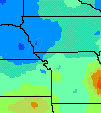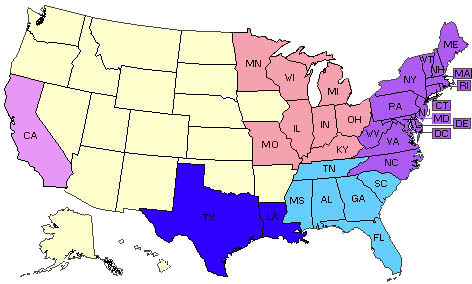Thanks to new Federal government initiatives giving the public
greater access to government services, everyone can breathe
a little easier.
Ozone
can aggravate asthma and other breathing problems, cause headaches
and nausea, and irritate eyes. Children, the elderly, people
with respiratory problems, and people who exercise outdoors
are particularly vulnerable to ozone-related discomforts.
But, high ozone levels can even affect healthy people.
 Pollution
controls on cars and industrial sources are reducing harmful
levels of ozone nationwide. But, levels still vary from place
to place because of factors like geography and the concentration
of local pollution sources. Even in one place, ozone levels
fluctuate over short-term periods because of variables like
wind and temperature. Of course, ozone levels usually peak
everywhere at mid-day and are especially high during the summer
because sunlight encourages ozone formation.
Pollution
controls on cars and industrial sources are reducing harmful
levels of ozone nationwide. But, levels still vary from place
to place because of factors like geography and the concentration
of local pollution sources. Even in one place, ozone levels
fluctuate over short-term periods because of variables like
wind and temperature. Of course, ozone levels usually peak
everywhere at mid-day and are especially high during the summer
because sunlight encourages ozone formation.
If you
are particularly vulnerable to ozone, you need accurate, up-to-date
information to help you make important decisions about your
outdoor activity levels. So, how can you tell what the ozone
level is in your area? 
Checking
Short-Term Ozone Levels
The Environmental
Protection Agency (EPA) has the answer. A new EPA customer
service is available to give you current information about
ozone levels today and tomorrow in your area. Just visit the
EPA’s new Internet site.
This site provides real-time, accurate, and easy-to-understand
information, including:
|
Maps
showing current and forecasted air pollution levels
in selected cities and states
|
|
Recommended
health precautions (when warranted) for sensitive
and non-sensitive populations, based upon the most
recent scientific information
|
|
General
explanations of the health effects related to air
pollution
|
This evolving
Internet site provides information about ozone. It eventually
will cover all 50 states and offer tips for protecting your
health and reducing ground-level ozone air pollution.
You can
also get information on current and predicted air pollution
levels in selected cities and states on the Weather
Channel’s Internet site.
Checking
Long-Term Changes
If you’re
looking for long term information, you can check levels of
individual pollutants and their changes over time by city,
county, or state by visiting the EPA
Internet site. This informative site is updated monthly
and can answer many questions, including:
|
What
was the most common air pollutant measured in my county
last month?
|
|
Have
ambient air measurements increased, decreased, or remained
unchanged over the past five years?
|
|
Are
there major sources of air pollution in my county?
|
For
more information and real-time data on environmental topics,
visit the EPA’s Internet
site, or call Chet
Wayland, Group Leader at EPA’s Information Transfer Group,
at (919) 541-4603.
(For technical
information or user support from EPA, call (800) 367-1044
or (800) 334-2405.)
10/3/99
Home |
Privacy |
Contents |
Comments |
Email Me |
Search